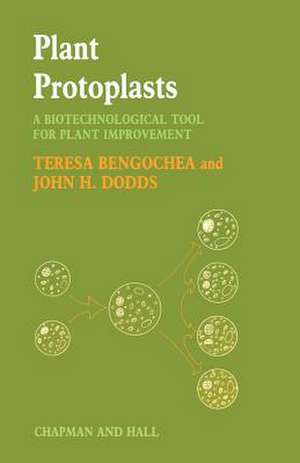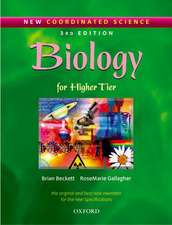Plant Protoplasts: A Biotechnological Tool for Plant Improvement
Autor Tessa Bengocheaen Limba Engleză Paperback – 13 oct 2011
Preț: 375.84 lei
Nou
Puncte Express: 564
Preț estimativ în valută:
71.93€ • 74.52$ • 60.03£
71.93€ • 74.52$ • 60.03£
Carte tipărită la comandă
Livrare economică 21 martie-04 aprilie
Preluare comenzi: 021 569.72.76
Specificații
ISBN-13: 9789401083171
ISBN-10: 9401083177
Pagini: 100
Ilustrații: VI, 90 p.
Dimensiuni: 140 x 216 x 5 mm
Greutate: 0.13 kg
Ediția:Softcover reprint of the original 1st ed. 1986
Editura: SPRINGER NETHERLANDS
Colecția Springer
Locul publicării:Dordrecht, Netherlands
ISBN-10: 9401083177
Pagini: 100
Ilustrații: VI, 90 p.
Dimensiuni: 140 x 216 x 5 mm
Greutate: 0.13 kg
Ediția:Softcover reprint of the original 1st ed. 1986
Editura: SPRINGER NETHERLANDS
Colecția Springer
Locul publicării:Dordrecht, Netherlands
Public țintă
ResearchCuprins
1 Introduction.- 2 Isolation and culture.- 2.1 Introduction.- 2.2 Choice of starting material.- 2.3 Enzymes and osmotica.- 2.4 Isolation methods.- 2.5 Purification of isolated protoplasts.- 2.6 Protoplast viability and plating density.- 2.7 Methods for protoplast culture.- 2.8 Cell wall regeneration.- 2.9 Division and growth.- 2.10 Isolation of subprotoplasts.- 2.11 Conclusions.- References.- 3 Regeneration of plants.- 3.1 History of plant regeneration studies.- 3.2 Organogenesis.- 3.3 Embryogenesis.- 3.4 Handling of regenerated plantlets.- 3.5 Genetic stability of regenerated plantlets.- References.- 4 Protoplast fusion.- 4.1 Introduction.- 4.2 Methods to induce fusion.- 4.3 Selection of fusion hybrids.- 4.4 Which plants to hybridize.- 4.5 Cybrid formation.- 4.6 Conclusions.- References.- 5 Protoplasts as physiological tools.- 5.1 Studies on DNA, RNA and protein synthesis.- 5.2 Protoplasts for isolation of cell components.- 5.3 Protoplasts for studies on cell wall regeneration.- References.- 6 Uptake of foreign materials.- 6.1 Introduction.- 6.2 Nuclei and subprotoplasts.- 6.3 Chloroplasts and mitochondria.- 6.4 Bacteria.- 6.5 Blue-green algae.- 6.6 Viruses.- 6.7 DNA.- 6.8 Non-biological materials.- References.- 7 Genetic engineering.- 7.1 Introduction.- 7.2 Induced tumours.- 7.3 The infective plasmid.- 7.4 Transformation of protoplasts.- 7.5 Which genes to engineer?.- References.




